- sketch.js
xxxxxxxxxxlet canvas;let bgTexture;let mainShader;let bgShader;let amplitude;let level = 0.4;let newLevel = 0.5;let soundFile;let radius = 1;let vertexDistortion = 0;let maxTurbulence = 0.0; let colorKick = 0.65;let unKick = false;function preload() { mainShader = loadShader("_distortion.vert", "_liquid.frag"); bgShader = loadShader("_vertex_passthrough.vert", "_bg.frag"); soundFile = loadSound("saedis' theme.mp3"); //Vocal samples taken from "Ayn Rand and Slavoj Žižek read "Barbie Girl" by Aqua" by Vocal Synthesis: //https://www.youtube.com/watch?v=h56WLqdD-7I&t=24s}function setup() { imageMode(CENTER); canvas = createCanvas(windowWidth, windowHeight, WEBGL); //Turn off the depth-buffer. Apparently this doesn't work in openprocessing. setAttributes('depth', false); noStroke(); //To use the bgShader as a background to draw ontop, I'm creating an additional p5.Renderer object to put the background shader into. //Unfortunately, this technique eats lots of performance, which is why I reduce the resolution so much. //And it also suits the look of a oldschool testimage. //On some devices, it might look really shitty though. bgTexture = createGraphics(width/5, height/5, WEBGL); amplitude = new p5.Amplitude(0.99);//The value inside the brackets adds some smoothing. soundFile.play(); frameRate(60);}function draw() { background(0); //Assigning the bgShader to the bgTexture render object. bgTexture.shader(bgShader); //Drawing a rectangle in bgTexture to have pixels for the fragment shader. bgTexture.rect(0, 0, width, height); //To add extra smoothing, I'm only sampling the sound level every ten frames and interpolate between the new and old value. if(frameCount % 10 == 0) { newLevel = pow(amplitude.getLevel()*10.0, 2.0); } if (newLevel != level) { level = lerp(level, newLevel, 0.0025); } //Antialiasing smooth(); //Preparing the uniforms for the distorion.vert shader. It's a bit archaic, please move along. let scaleValue = sin(frameCount*0.004); let animationValue = sin(frameCount*0.02); let animationMax = cos(frameCount*0.001); let animationMin = cos(frameCount*0.0001); let animationValueMapped = map(animationValue, -1, 1, map(animationMax, -1, 1, 0.1, 2), map(animationMin, -1, 1, -0.1, -2)); //Background shader uniforms //u_resolution and u_time are glsl built in variables, //so you also run the shaders standalone as long as you adjust the other uniforms. bgShader.setUniform('u_resolution', [width, height]); bgShader.setUniform('u_time', frameCount * 0.03); //Main vertex shader uniforms mainShader.setUniform("u_scale", map(scaleValue, -1, 1, -0.9, 0.7)); mainShader.setUniform("u_time_vertex", animationValueMapped); mainShader.setUniform("u_amplitude", map(level, 0, 3.5, 1, maxTurbulence)); mainShader.setUniform("u_vertex_amplitude",level*vertexDistortion); mainShader.setUniform("u_fbm_amplitude", colorKick); //Main fragment shader uniforms mainShader.setUniform('u_resolution', [width, height]); mainShader.setUniform('u_time', frameCount * 0.07); //Turbulence increase in the beginning. if(maxTurbulence < 4) { maxTurbulence+=0.001; } //Short color glitch near the end. else if (millis() > 115000 ) { maxTurbulence = 7; } else if (millis() > 115010) { maxTurbulence = 3.0; } //Adding a splash of blue at the right moment. if (millis() > 49000 && colorKick < 0.8 && unKick == false) { colorKick += 0.001; } else if(millis() > 57000 && colorKick > 0.65) { colorKick -= 0.0005; unKick = true; } //switching on the mainShader shader(mainShader); //Switching to the second part of the animation. if (millis() < 105000) //if (millis() < 0) { rect(-width/2, -height/2, width, height); } else { //Drawing the bgTexture as an image. image(bgTexture, -width/2.0, -height/2.0, width, height); sphere(width/(radius), 100, 100); radius+=0.03; if (vertexDistortion < 10.0) { vertexDistortion+=0.01; } } //print(frameRate()); //print(level); // print(millis());}function windowResized() { resizeCanvas(windowWidth, windowHeight);}- v1.11.3
- v1.11.2
- v1.11.1
- v1.11.0
- v1.10.0
- v1.9.4
- v1.9.3
- v1.9.2
- v1.9.1
- v1.9.0
- v1.8.0
- v1.7.0
- v1.6.0
- v1.5.0
- v1.4.2
- v1.4.1
- v1.4.0
- v1.3.1
- v1.3.0
- v1.2.0
- v1.1.9
- v1.1.7
- v1.1.5
- v1.1.4
- v1.1.3
- v1.0.0
- v0.10.2
- v0.9.0
- v0.8.0
- v0.7.3
- v0.7.2
- v0.6.1
- v0.6.0
- v0.5.16
- v0.5.11
- v0.5.8
- v0.5.7
- v0.5.2
Select mode or a template
Centers sketch and matches the background color.
Prevents infinite loops that may freeze the sketch.
- p5.sound
- v1.11.3
- v1.11.2
- v1.11.1
- v1.11.0
- v1.10.0
- v1.9.4
- v1.9.3
- v1.9.2
- v1.9.1
- v1.9.0
- v1.8.0
- v1.7.0
- v1.6.0
- v1.5.0
- v1.4.2
- v1.4.1
- v1.4.0
- v1.3.1
- v1.3.0
- v1.2.0
- v1.1.9
- v1.1.7
- v1.1.5
- v1.1.4
- v1.1.3
- v1.0.0
- v0.10.2
- v0.10.0
- v0.9.0
- v0.8.0
- v0.7.3
- v0.7.2
- v0.6.1
- v0.6.0
- v0.3.5
- v0.3.2
- v0.3.0
p5.sound extends p5 with Web Audio functionality including audio input, playback, analysis and synthesis.
Examples: Play - Synthesis - Microphone
This will be the default layout for your sketches
Easy on the eyes
It will show up when there is an error or print() in code
Potential warnings will be displayed as you type
Closes parenthesis-like characters automatically as you type
Controls
Play
Ctrl+Enter
Code
Ctrl+Shift+Enter
Save
Ctrl+S
Interface
Fullscreen
Ctrl+Alt+F
Switch Layout
Ctrl+Alt+L
Settings
Ctrl+Alt+.
Editor
Tidy Code
Ctrl+B
Multiple Cursors
Ctrl+Click
Duplicate Line/Selection
Ctrl+Shift+D
Move Line
Alt+↑/↓
Select Multiple
Ctrl+D
Find in Code
Ctrl+F
Find Next
Ctrl+G
Find Previous
Ctrl+Shift+G


